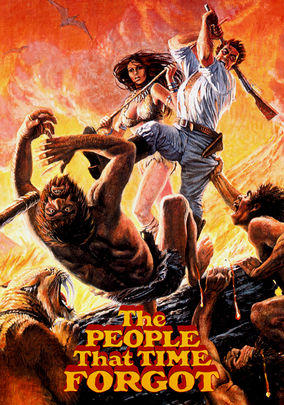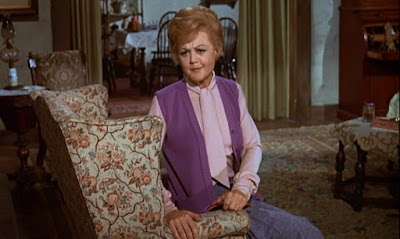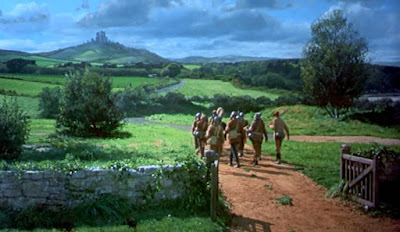Behind the mask of innocence.....murder!
Universal Pictures made a number of good melodramas in the late 1950s that have fallen into obscurity today, one of which was Flood Tide ( 1958 ) starring George Nader. It's similar to The Bad Seed ( 1956 ) with its main antagonist being a child, but instead of being just a melodrama, it has a touch of murder mystery to it as well.
The film begins with Bill Holleran ( Russ Conway ) being tried and convicted of murder....the murder of a man who was found washed upon the beach. He had got into an argument with a drunken friend at a party at his beach house and, according to Bill, they had a fistfight and then his friend stumbled away down the street trying to hitch a ride to town. However, a key witness claims that he saw Bill murder the drunken man and then drag his body out to the Pacific Ocean.
That key witness is David Gordon ( Michel Ray ). He's an intelligent and conniving 10-year-old who was crippled in an automobile accident, the same accident that killed his father several years previously. His mother Anne ( Cornell Borchers ) is devoted to his well-being and believes in the innocence of her son. She is so attentive to him that he develops an intense jealosy whenever he sees anyone take an interest in his mother.
Steve Martin ( George Nader ), is the owner of the beach house that Bill Holleran had rented. He was away in South America for several months, but when he hears about the case, he comes back to testify against young David.....he believes the boy to be lying. Alas, he is too late and the trial is over. Steve attempts to explain why he thinks that David may have been lying and thus begins a flashback of the events leading up to the trial.
If you expect to watch an engrossing murder mystery, then you would probably be disappointed with Flood Tide, but if you like a good melodrama, then it is well-worth checking out. I found the first half-hour to be difficult to watch because Anne so willingly allows David to rule her life, but after the flashback ends, the film takes a nice twist and we see Steve playing psychological games with David in the hopes of drawing him out of his selfish misery and getting him to confess to lying.Steve is in love with Anne and he sees that the only way he can marry her is by winning the love of David. He valiantly tries to give the boy confidence in himself and make him realize that just because he is physically crippled does not mean he has to be mentally crippled.
George Nader and Cornell Borchers are both excellent in their parts. Their blossoming romance is both touching to watch and rather sad because it seems so hopeless. Michel Ray is also very good as David. He was very much like Martin Stephens from Village of the Damned ( 1960 ), without the glowing eyes but equally dangerous. Ray made his first film appearence in The Divided Heart ( 1954 ), an excellent British film, and then he came to Hollywood where he had a very short career. He made a handful of westerns but is best known for playing Bud Brewster in the B-film The Space Children ( 1958 ).
Also in the cast is the lovely Joanna Moore as Steve's old flame, Judson Pratt as a doctor who wants to help David, and Charles Arnt as a kindly grocer. Troy Donahue also makes a brief appearence as a teenager on the beach.
Flood Tide has not yet been released on DVD, but copies of the film taped from late-night television can be found online.






























































